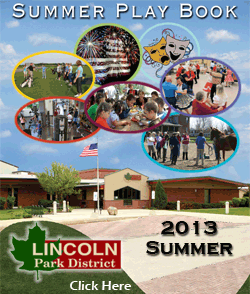|
 The
courtroom seats only about 50 people, but folding chairs were
brought in to help accommodate as many as possible. Guards were then
forced to turn some spectators away because of the overcrowding. The
courtroom seats only about 50 people, but folding chairs were
brought in to help accommodate as many as possible. Guards were then
forced to turn some spectators away because of the overcrowding.
The attendees in the gallery appeared to be a mix of family members on
both Harris' side and the Gees. There were a number of media
professionals in the room as well.
Closings were set to begin at 8:30 a.m. The first to arrive in the
room were all attorneys and Christopher Harris. Harris and his
attorney Dan Fultz spent time quietly talking before the jury was
brought in at around 8:40 a.m.
There are five men and seven women on the jury, plus alternates. The
alternates would also hear the closing statements. During
deliberations, if a juror should have to be dismissed, an alternate
will be used and deliberations will have to start over.
The prosecution was the first to make their case to the jury, with
Assistant Attorney General Michael Atterberry being the speaker for the
prosecution.

Atterberry began by setting the scene of what
happened on the night of the murders. A witness provided evidence
that moments before the Harris brothers arrived at the home, Rick
Gee was alive, awake and texting to a female friend in the community.
The Harris brothers arrived unannounced and uninvited at the Gee
home after a night of drinking, drugs and looking for female
companionship. Atterberry told the jurors Chris Harris wanted to
"get laid" but had struck out three times that night.
Atterberry addressed the murder weapon, saying that even though Chris
Harris denied it, the tire iron was in his truck prior to the
murders. He said Harris took the iron into the home with him. Atterberry backed this up with testimony from Jason Harris to that
effect, and also said the iron did fit new lug nuts on the tires of
the Harris vehicle.
Atterberry said Chris Harris described what had happened in the
house. Chris told Jason he was in Justina's room when Dillen came in
and asked what was going on. Harris struck Justina, and "took care
of Ruth." After that he "took care of" Austin Gee, who had run to a
bathroom.
In regard to Dillen Constant, who Chris Harris said was bloody when
he first saw him that night, Atterberry said evidence shows and
Jason Harris' testimony supports the fact that Dillen escaped the
house through a window unharmed and not bloody.
Atterberry recounted Jason Harris' testimony that outside the house Dillen
Constant held his hands up, begging Chris Harris to "please stop." Dillen was on his back
and Chris was standing over him,
repeatedly hitting him with the tire iron. Dillen had retreated
outside looking for Jason Harris to offer him help, but Jason did
not help.
Atterberry said Dillen Constant returned to the home to
try to protect or save his family from Chris.

Harris told his brother that Dillen was the hardest to kill because
he had a knife. The knife was found outside the home during the
police investigations.
Atterberry told the jury that all these claims are supported by
blood evidence inside and outside the home. He told the jury the "blood
evidence tells a powerful story and proves prosecution's case."
He added that for the defense to call this a case of self-defense is
laughable. Atterberry hammered home that Dillen was a victim. He
told the jurors Dillen was beaten outside the home and went back in, where
he was again beaten in the master bedroom. He said evidence showed
that Dillen was crawling on his hands and knees in the room and was
struck again and again by Christopher Harris. Atterberry said Dillen was near death
by that time, and it was a miracle he was
even able to get to the master bedroom.
[to top of second column] |

Using one of the many photos of the victims and crime scene,
Atterberry showed the jury a mark on Dillen's face. He also showed
blood stains identified as Dillen's on and under the bed and
explained that the mark and other evidence gathered indicates that Dillen
may have been under the bed trying to hide and was dragged out in the
final moments of his life. He said the evidence that Dillen was
trying to hide totally destroys the defense's claims of self-defense.
He drove home his point, saying: "It's easy to blame a 14-year-old
boy who isn't here to defend himself."
Atterberry said Dillen was the hero in this situation. He had tried
to defend and help his family. Atterberry went on to describe the wounds suffered by all the
victims as being similar. The blows were delivered to the head and
body, and all had defensive wounds on their arms, including
3-year-old Tabitha Gee, who survived.
Moving on to the Jason Harris testimony, Atterberry said that it was
only logical that Chris Harris would have told his younger brother
what he had done and how it all happened.
He then posed the question to the jury: "Why?" Why didn't Chris
Harris call the cops if his story is truth, and why didn't he tell
his brother it was self-defense?
Chris Harris thought he had outsmarted the cops, Atterberry said. He
destroyed evidence and even went so far as to buy a new pair of
shoes in a larger size to throw the cops off.
Atterberry also spoke about the stolen laptop. He told jurors the
laptop could have been Chris Harris' salvation. So, why did he
destroy it? Because he was afraid it would show what happened that
night. Atterberry said Harris destroyed it because he was "worried"
about what it might hold.

Atterberry continued his prosecution of Harris by telling of the bathroom where
Austin Gee was found. Going to the palm print in the bathroom
belonging to Harris, Atterberry said the print was in the perfect
position for one who needed leverage in order to deliver blows to
the child. He also reminded the jury that the palm print contained blood
evidence from three different people. Harris claimed he slipped in
the blood when he was checking on Austin, but Atterberry said there
was no evidence to support that.
Again talking about the shoes, Atterberry reminded the jury that
Dillen Constant was barefoot. He said there were shoe prints all
over the house, but not barefoot prints.
The next topic in Atterberry's presentation was the Harris vehicle.
He said Harris made an attempt to clean the truck and remove blood
evidence, but forensic experts found eight blood evidence samples inside
the truck.
Blood on the steering wheel belonged to three different people, though
none was specifically identified. Rick Gee's blood was also found
inside the truck.
Back to the tire iron and the physical beatings, evidence shows that at least 158 blows
were delivered to various members of the
Gee household. Of those, Dillen Constant received 46. Atterberry
drove home his point, saying: "There is no way on God's green earth
that Dillen got those blows before Chris got there." (Harris'
testimony contended that Dillen was bloody when he arrived and that
Harris struck him in self-defense, but does not account for 46 blows
in his story.)
After more than two hours, Atterberry started winding down his
presentation. The judge had ordered that the two sides would be
allowed three hours each to present three closings. This included
rebuttal.
The defense will offer their closing, and then Logan County State's
Attorney Jonathan Wright will deliver the rebuttal for the
prosecution.
[LDN]
 |